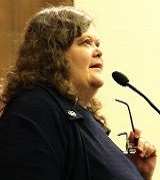(2000-level half-course)
This course will oscillate between the stories of historical medieval individuals and medieval literary figures, considering how these diverse entities embodied their beliefs and scratched out a sense of agency in the Middle Ages. By fighting monsters, Beowulf in an Old English poem rebuilt one kingdom and maintained another, but in the end failed as a king. Arthur, in a broad range of medieval texts, built a kingdom with a code of conduct and a good marriage, but both failed him and the kingdom. Sir Morien, the Moorish relative of the Grail quester Perceval in Arthurian legend, boldly marches into Arthurian tradition and carves out his own powerful and striking place at the Round Table. He is often confused with St Maurice, the Roman commander who died with all his men rather than persecute Christians in Egypt, and lived again in the lance of St Maurice carried at the head of Charlemagne’s armies. Hildegard of Bingen by her own account and by the reports of several others who dealt with her, built a nunnery and many intellectual and musical works by dint of her obstinacy and her faith; her work disappeared into obscurity. Eleanor of Aquitaine was queen-consort of France, and queen of England, along the way going on the Second Crusade (and contributing essential strategic decision-making in one battle), and perhaps creating the concept of courtly love, a notion that we continue to wrestle with in the present day. Pope Sylvester II was a remarkable historian and scientist, but his brief papacy at the turn of the first millennium led to his being labelled a devil-worshipper and apostate in later days. Other medieval figures exist in the borderlands between what would today be called literature and what would today be called history: Joan of Arc led the French to victory in retaking their lands from the hated English, but her story is as much myth as it is history; and Robin Hood might be an outlaw dwelling in the greenwood under Richard the Lionheart, or a displaced earl practising local justice and demonstrating archery under Edward III. In this course we will attempt to disambiguate history from literature, and to discuss the many and multifarious modes of medieval heroisms and antiheroisms.
Required Texts:
Liuzza, R.M. trans., Beowulf. (Peterborough: Broadview Books, 2013).
Geoffrey of Monmouth, The History of the Kings of Britain, trans. Lewis Thorpe (London: Penguin, 1966).
Materials posted to the OWL site concerning Hildegard of Bingen, Eleanor of Aquitaine, Sylvester II, the Black Prince, Robin Hood, Sir Morien (translation by Jessie Weston), St Maurice, and others.
|
|

